In the Studio: Awilda Sterling-Duprey
“I am interested in finding expressions, drawing with my eyes closed, blindfolde...
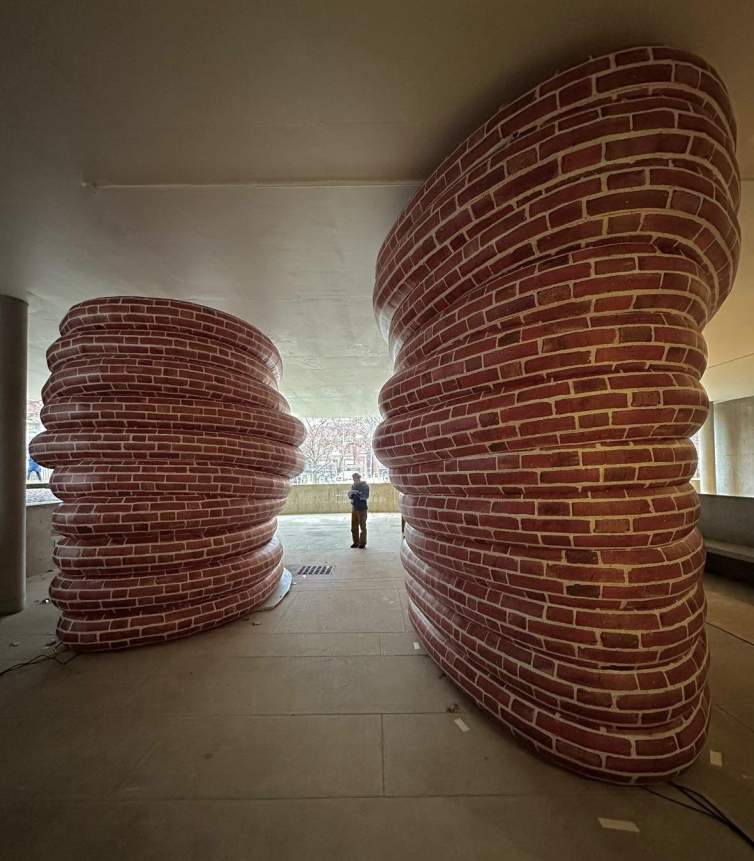
Jacqueline Kiyomi Gork is a Los Angeles-based artist and a 2023 Joan Mitchell Fellow. We interviewed her about her work and creative practice in February 2024. The following is an edited transcript of that conversation.
I work mostly with sound installation and sculpture, sometimes encompassing performance, architecture, and textiles. For me, sound serves as the beginning and end point. Often, other materials and mediums flow through that, but my work comes from sonic experiences. Then I transform that experience. I research it and try to learn about it, try to see how others respond to it, and then create a sonic environment in which the questions that get conjured up are explored for the public.
Currently, my work is about trying to understand experiences with sound and emotion that exist in this messy world, trying to find my place in it, or create my place in it, and invite others in. I’m trying to piece together the contradictions or synchronicities that happen in public life. Most of the experiences that inform my work are everyday things. It can be something simple like having an emotional song turn on through loudspeakers as you pump gas. The triggers of when sound is used to manipulate space and/or people, whether that is agreed upon amongst all parties or not. Just trying to make sense of it all.
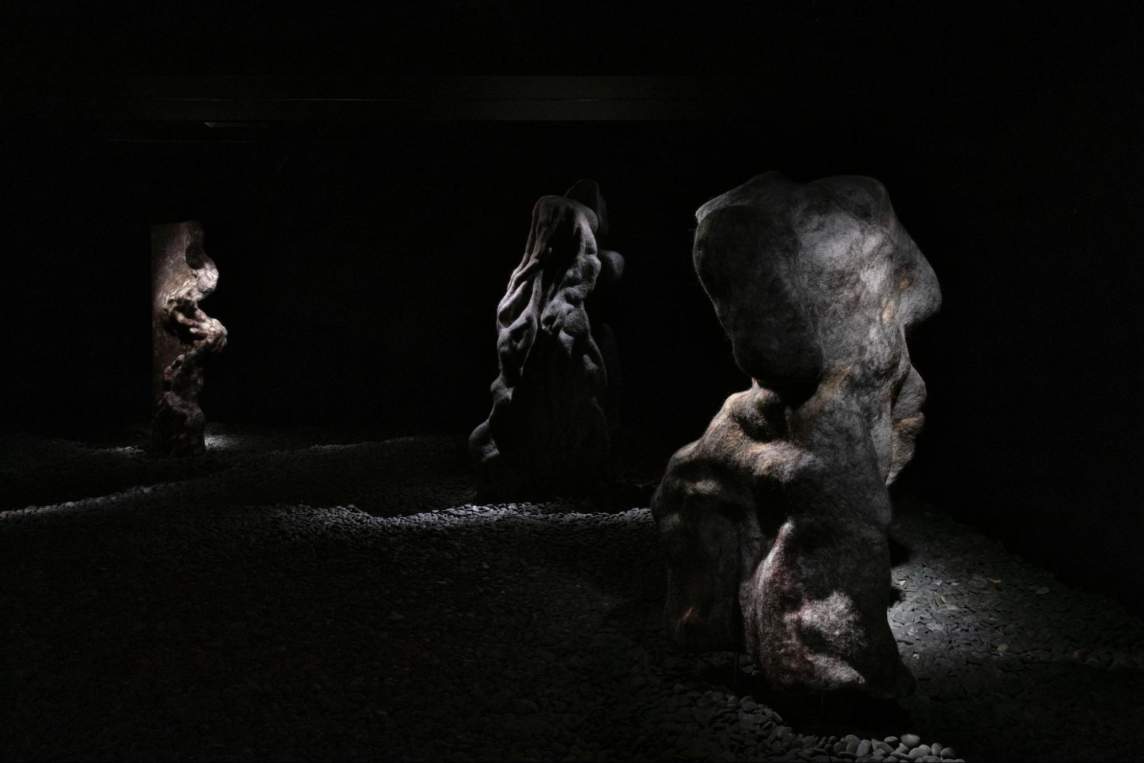
I'm not a musician. I grew up trained in dance, so I think there's a musicality within movement and sound that I understand, but I don’t have any formal music training. I became involved with the noise and experimental punk scene, where I learned to just DIY everything. And I am fortunate to have a lot of incredible musicians I collaborate with in my community. I take concepts, tools, and techniques from the audio world and apply them to the physical world through my sculptures.
When people experience my work, I hope that they come away a little bit more sensitive, a little more aware of how their body relates to space and how the space relates to their body. Just a little bit of self-awareness in regards to one's own movements and the space their body takes up or does not take up.
I've spent a lot of time watching audiences interact with my work, either during research periods or the shows themselves. At The Lab in San Francisco, we even had security cameras installed so that I could see how people interacted and moved. I'm trying to create a choreography—it's an open-ended score, so it's not saying, oh, you have to turn right here or turn left there. But I want to understand, are those sounds working? Are they attracting people in this way or that way? Is there a congestion point within the installation?
I'm thinking about a piece I made last year around this time at the Institute of Contemporary Art, Los Angeles, which was a clear maze, and watching how people interacted with it. At what point did they feel comfortable spending time there? Did they walk through quickly, paying more attention to what they see versus listening, which takes more time? I've also done research projects, working with dancers or other performers to see how attention is being guided, manipulated, or distracted within the space, sound, and architecture.
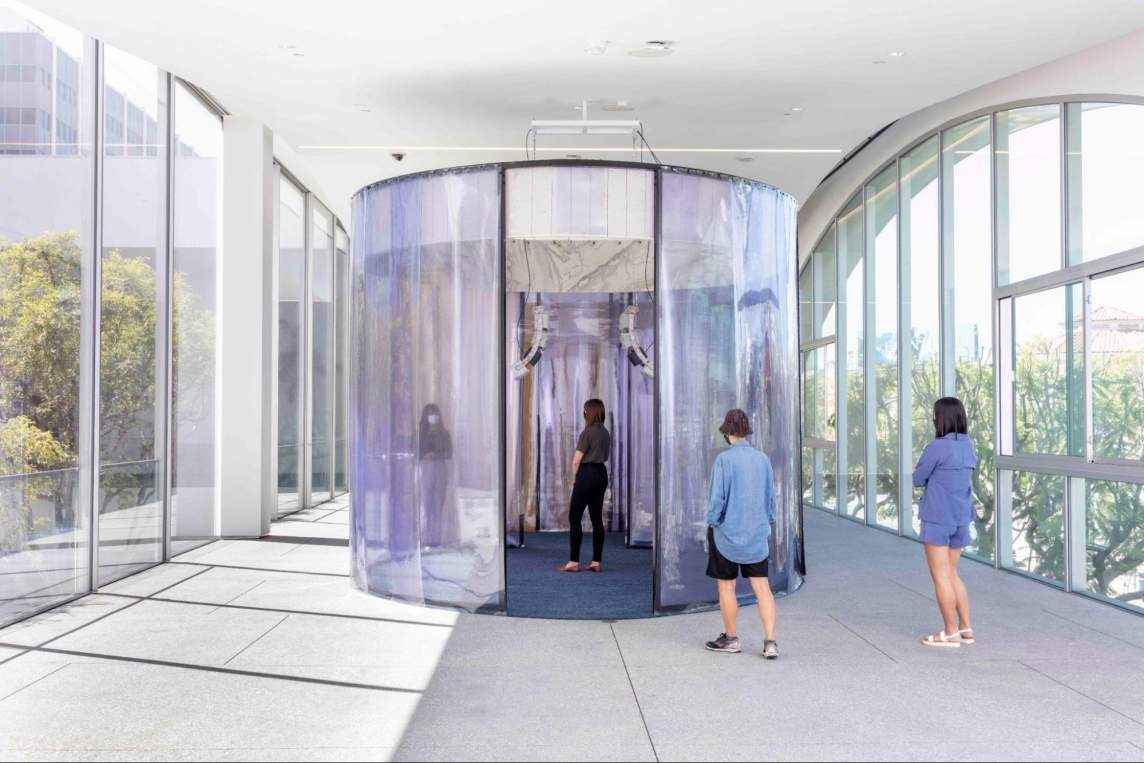
In my installations, there’s a necessary relationship between sound and material. My desire is to create multichannel sound installations, yet none of the spaces I work with are built for sound, so the acoustics prevent me from having clear, controlled audio. On the other end of the spectrum, concert halls or spaces designed for sound are not made to do what I would like to do visually and spatially. So, I create my own spaces within the space. It involves lots of material because I need to manipulate the acoustics to make the sound work. And those materials also inform what I’m able to do with sound.
My work comes together on-site rather than in the studio. I come in with materials and sound samples and/or software that I'm going to use. There’s equipment like microphones and speakers and the sculptural elements—textiles and such. I put them all together, and then I start composing. Nothing's actually created until they're all together. I think of these moments as a kind of performance.
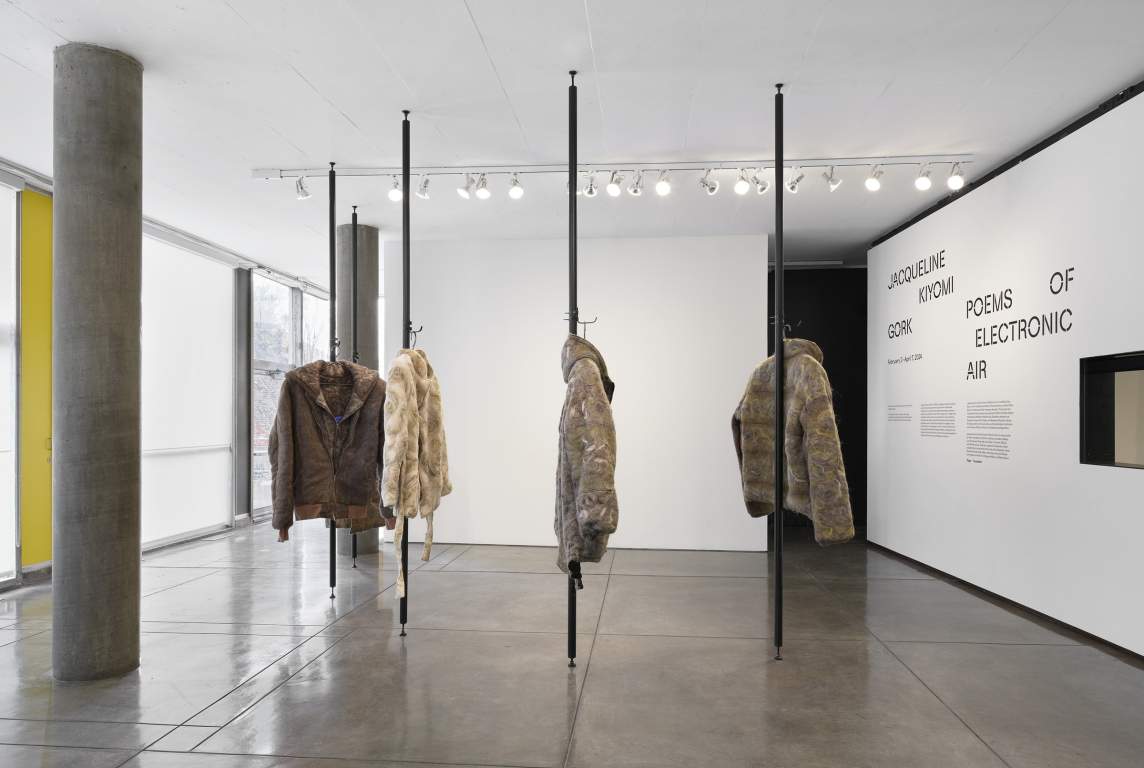
Many different things go into how I decide to make what I make, when and where I do it. For example, I just finished a show at the Carpenter Center for Visual Arts at Harvard. The show comprises three different bodies of work, a lot of which responds to the building and the architecture itself. The Carpenter Center is Corbusier's only building in North America. It's also the second building on Harvard's campus that involved no red brick. It really stands out.
One of the few things I knew when I came to do a site visit is that the field of architectural acoustics—the mathematics and the computational side of it all—was developed at Harvard around the turn of the century. And so there are these stories that came out of there about the poor acoustics in a lecture hall in the Fog Art Museum, where no one could understand the speaker due to a long reverberation time. Wallace Clement Sabine, a Harvard physicist, created the first algorithm for understanding absorption and installed the first felt absorption panels. He later worked on the Boston Symphony Hall.
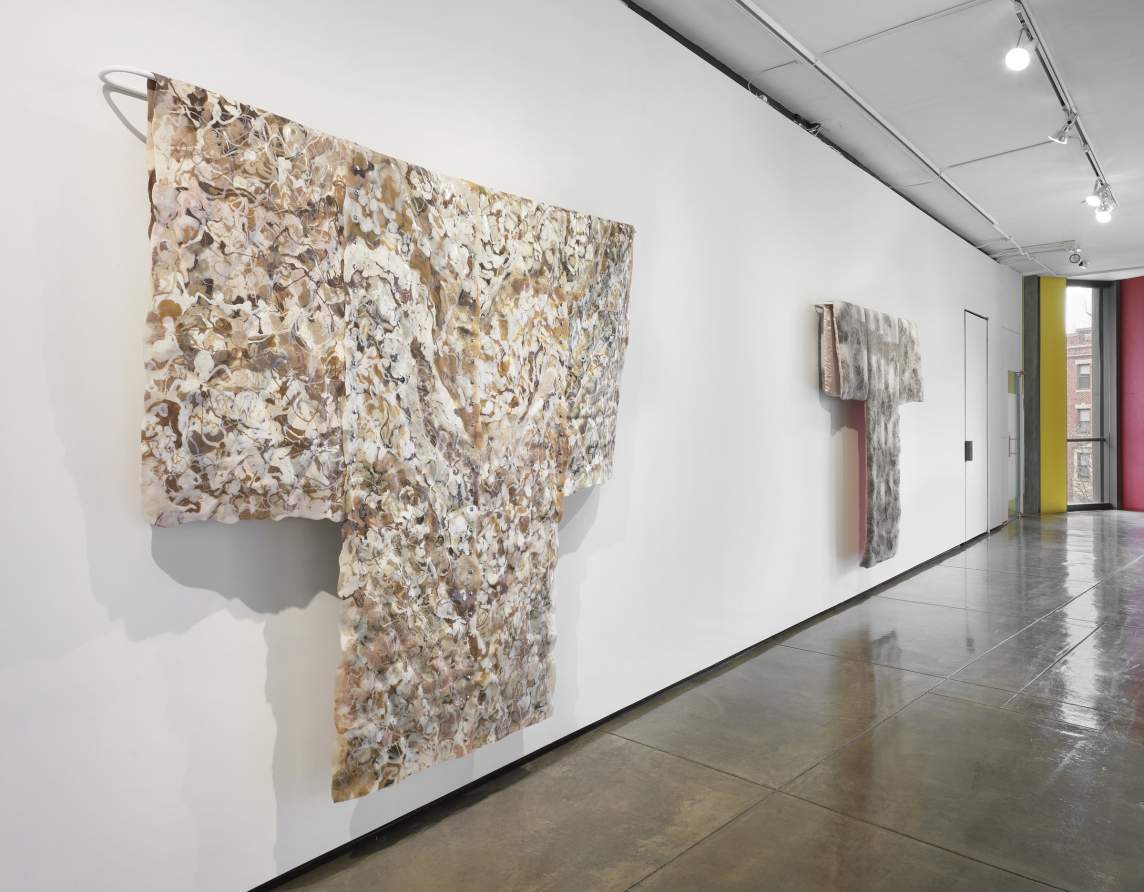
In undergrad, I was obsessed with this fallacy of men being able to control people and the environment through architecture and these utopian ideals that would lead to a dystopian reality. Corbusier fits into that, particularly with Chandigarh in India, which I visited 15 years ago. I had a very, very strange experience there with his architecture, textiles, and the people inhabiting it. So I was coming into this project with a lot of pessimism about Corbusier’s work, but also an acknowledgement for his role in architectural history. He was one of the only architects who designed acoustic materials because he worked in cement, so you need to have softness. One of his acoustic panels is up in the theater at the Carpenter Center. He also designed the Philips Pavilion at the 1958 Brussels World's Fair, which housed a very early multichannel composition by Edgard Varèse, called Poème électronique. The title for my show, Poems of Electronic Air, references this work. Xenakis, another composer I admire, also worked on that project.
Overall, the show is kind of taking the piss out of the building but also recognizing it. I am still dealing with and responding to Corbusier but also making fun of it, using it against itself.
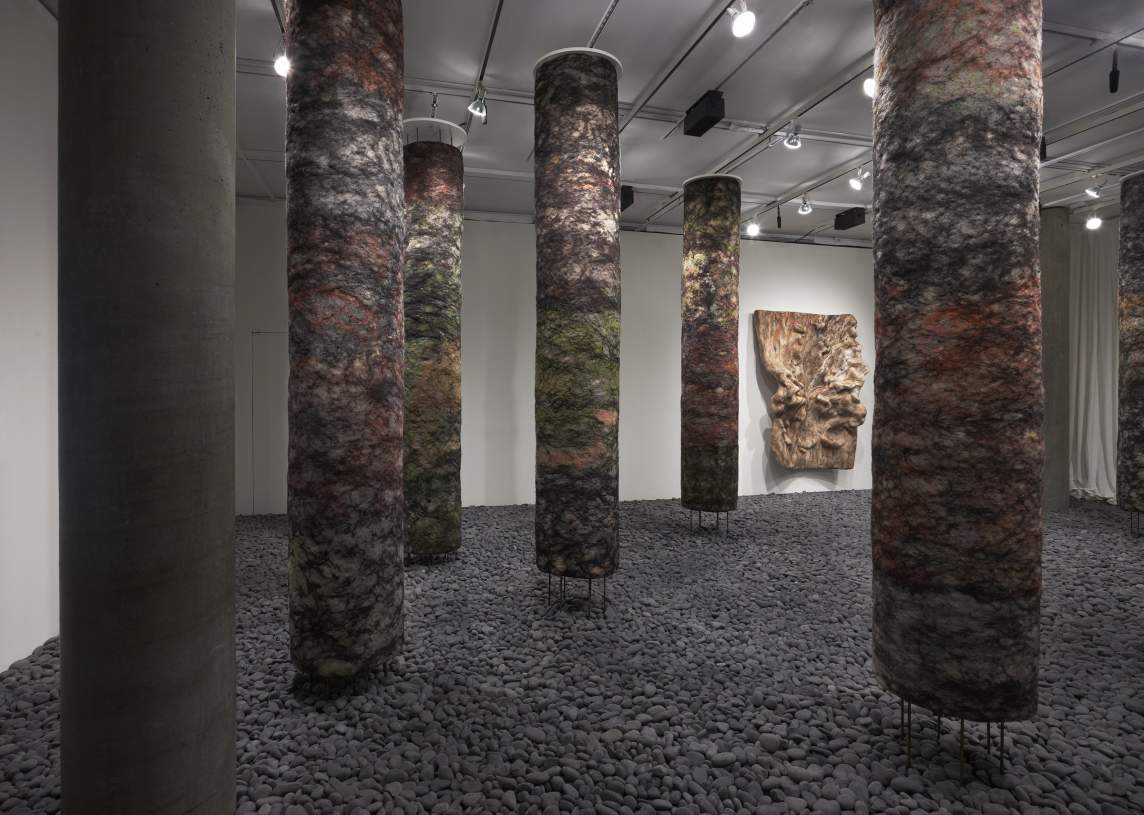
At the Carpenter Center, an installation upstairs involves rocks on the ground. We built a false floor, or “stage,” as I like to think about it, with contact mics underneath, microphones above, and speakers all around. There are these columns that I made out of fiberglass and wool. Within the gallery itself, there are cement columns because the building structure is supported by them. The columns are everywhere. There's no avoiding them, and it's just so ridiculous because this is not a very big gallery, and yet it's not a “clean white box.” Corbusier is still very much there, like, “Hey, you're still in my building!” So responding to that, I made my columns, drowning out the columns that existed—that was one of the goals with the sculptures.
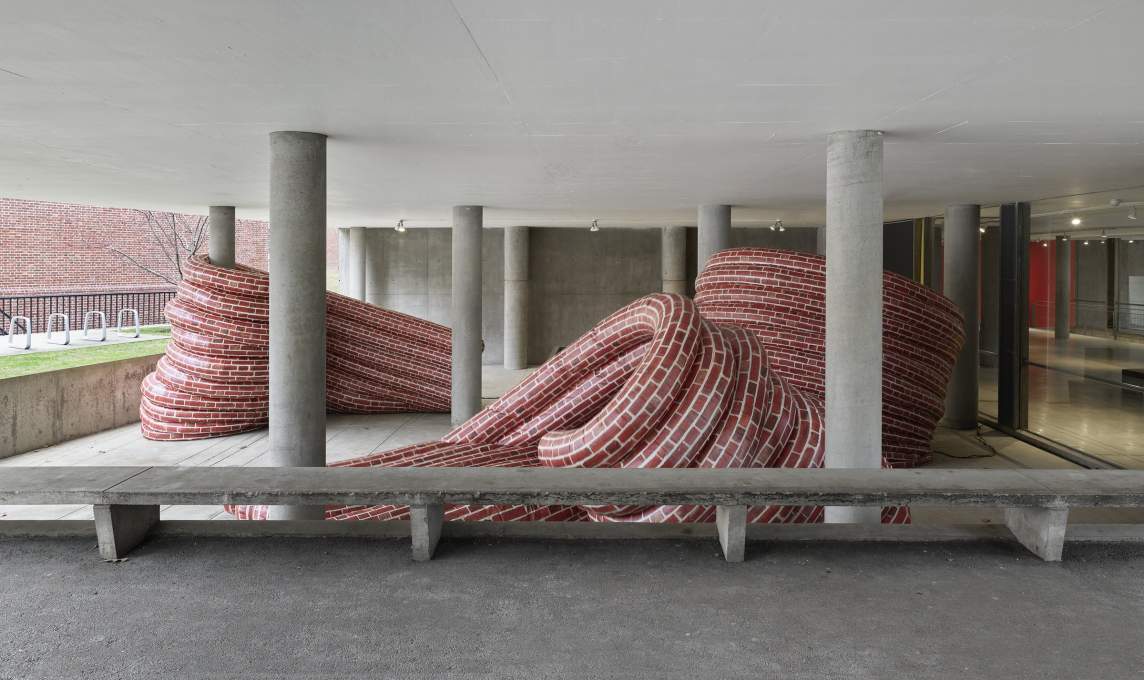
Then the downstairs space had inflatable plastic bouncy castle walls, with red brick pattern, that rise and fall in relationship to the columns as well. The columns in the downstairs are holding the walls of the bouncy castle—they're wrapped around it. It has music that’s based on romantic classical music that was very popular when the Boston Symphony Hall was created.
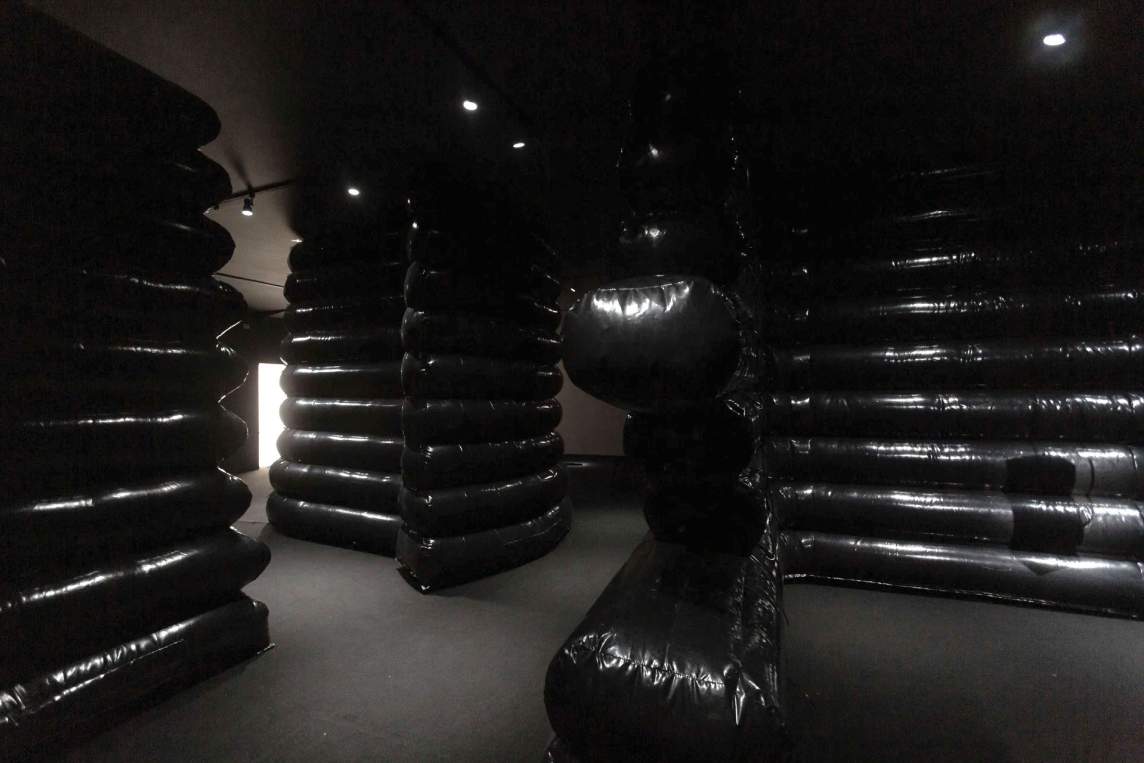
It’s been a very busy time for me. Including the Carpenter Center show, I’ve had five shows pretty much back to back, but I don’t have any shows coming up right now. I'm looking forward to having a break and starting new research into a very personal topic about the Japanese American side of my family.
I'm Yonsei, fourth-generation Japanese American. My family never talked about their experiences with internment camps in the US until Trump got elected. When all the migrant camps were happening, then some of my family members finally started speaking out and talking about it. Most of the generation that experienced the camps are gone. But some of my living relatives were born in the camps.
Part of the Japanese side of my family is Okinawan from Hawaii, and they were not in the camps. So I've always seen how these very different experiences of the US shaped and shifted the family. It’s something that I've always had a lot of questions about and don't really understand. It's also very intimidating. It's very personal, and a difficult subject to delve into because there's a lot there that's not known. It was kept silent and so secret for so long.
I think I have also avoided this subject because I was pressured a lot when I was in high school and junior high to make work about being Japanese American. It was the nineties. I really resisted that. I hated being pigeonholed, like, “You're not white, so therefore, you must be making work about your identity.” But now I think we're in a different place where those expectations are not as suffocating as I feel like they once were. There is more diversity in the art world and more openness for artists of any ilk and kind to make work about whatever the hell they want to make work about. I now feel more comfortable with trying to do something with this family history.
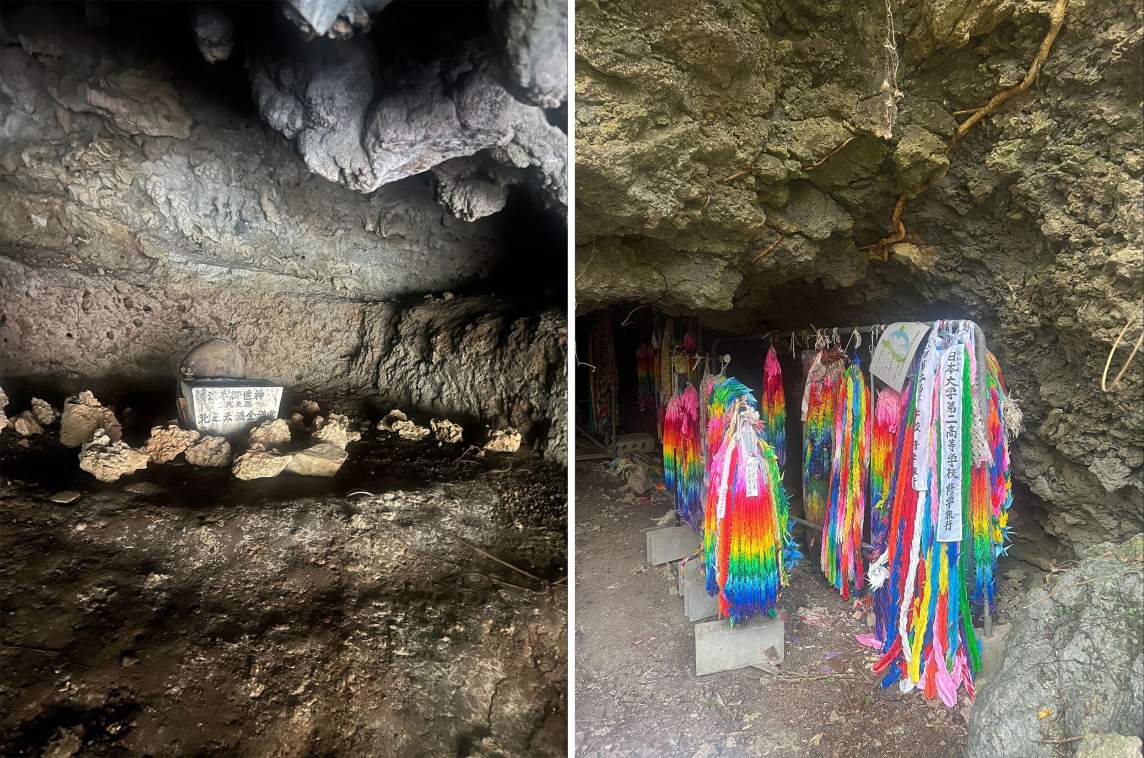
Last fall, I went to Okinawa for a week and I spent some time in the caves, where a lot of Okinawans committed suicide because the Japanese soldiers told them to. I had a couple of very profound experiences in these caves, which are very heavy and loaded with that history. Then I found out that one of my Japanese American uncles from California was in the US Army and was a translator, trying to get people out of the caves safely. He never talked about that, but my mom found out about it recently from a cousin. There's a lot of uncovering of family secrets—it's all very sad. I don't quite know where to go yet, but I'm going to try to write some travel grants so that I can get to Japan, and go to Okinawa again. I also need to go to the camps in the US where my family members were interned, as I have never been there. I look forward to seeing where it all leads.
Interview and editing by Jenny Gill. Learn more about Jacqueline Kiyomi Gork’s work at jacquelinekiyomigork.com and on Instagram.